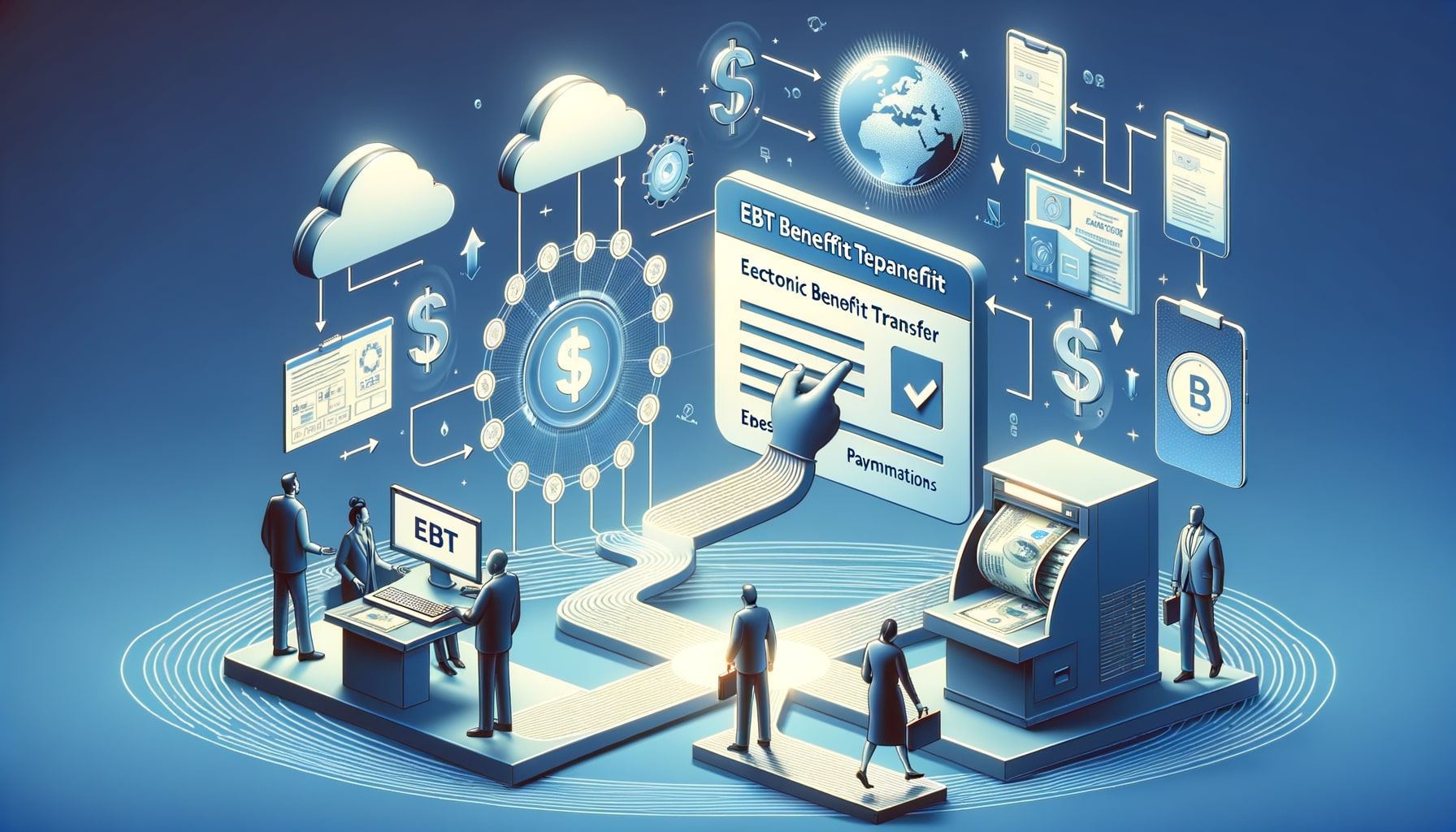
By Ethan Brooks November 22, 2024
In today’s digital age, electronic payment systems have become increasingly popular and convenient. One such system that has gained significant traction is the EBT payment system. EBT is a government program that allows eligible individuals and families to receive and use benefits such as food stamps, cash assistance, and other social welfare programs through a plastic card similar to a debit or credit card.
This comprehensive article aims to provide a detailed understanding of EBT payment systems, including how they work, their benefits and limitations, eligibility criteria, different types of EBT programs available, EBT card usage, fraud prevention measures, and frequently asked questions.
Understanding the Basics of EBT
EBT is a system that replaces traditional paper-based methods of distributing benefits with an electronic system. It is designed to streamline the process of distributing benefits and ensure that recipients have access to their benefits in a secure and efficient manner. EBT cards are issued to eligible individuals and families, and these cards can be used at authorized retailers to purchase eligible items. The benefits are loaded onto the card each month, and recipients can use the card to make purchases at approved locations.
How EBT Works: A Step-by-Step Guide
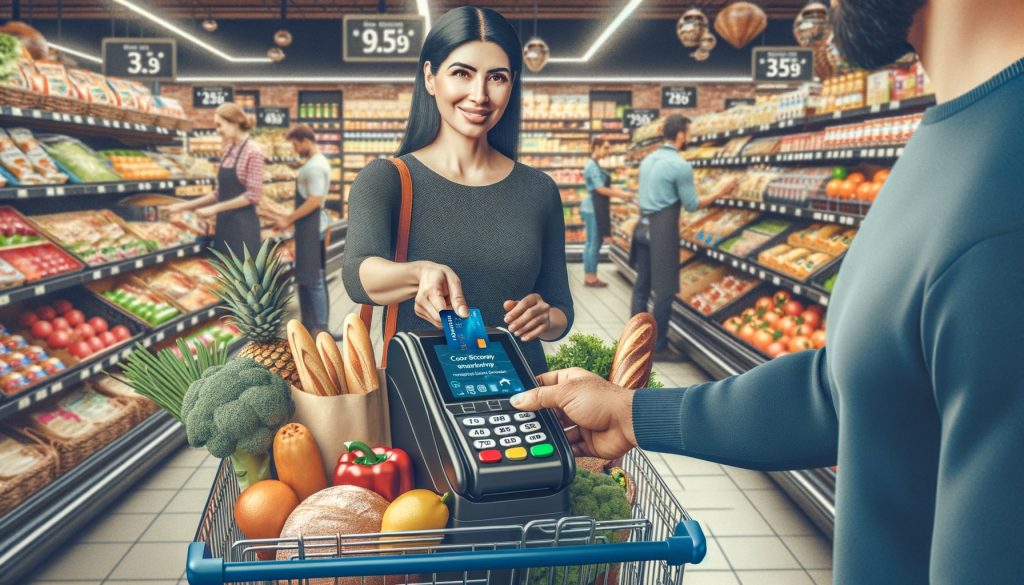
- Eligibility Determination: Before receiving an EBT card, individuals and families must meet certain eligibility criteria set by the government. These criteria typically include income limits, household size, and other factors.
- Application Process: Once eligibility is determined, individuals can apply for EBT benefits through their state’s social services agency. The application process may involve providing documentation such as proof of income, identification, and other relevant information.
- EBT Card Issuance: Once the application is approved, the individual or family will receive an EBT card in the mail. This card is similar to a debit or credit card and contains the recipient’s name, card number, and other necessary information.
- Benefit Loading: Each month, the approved benefits are loaded onto the EBT card. The amount loaded is based on the recipient’s eligibility and the specific program they are enrolled in.
- Card Usage: Recipients can use their EBT card at authorized retailers, including grocery stores, supermarkets, and farmers’ markets. The card is swiped or inserted into a card reader, and the recipient enters their Personal Identification Number (PIN) to complete the transaction.
Benefits and Limitations of EBT Payment Systems
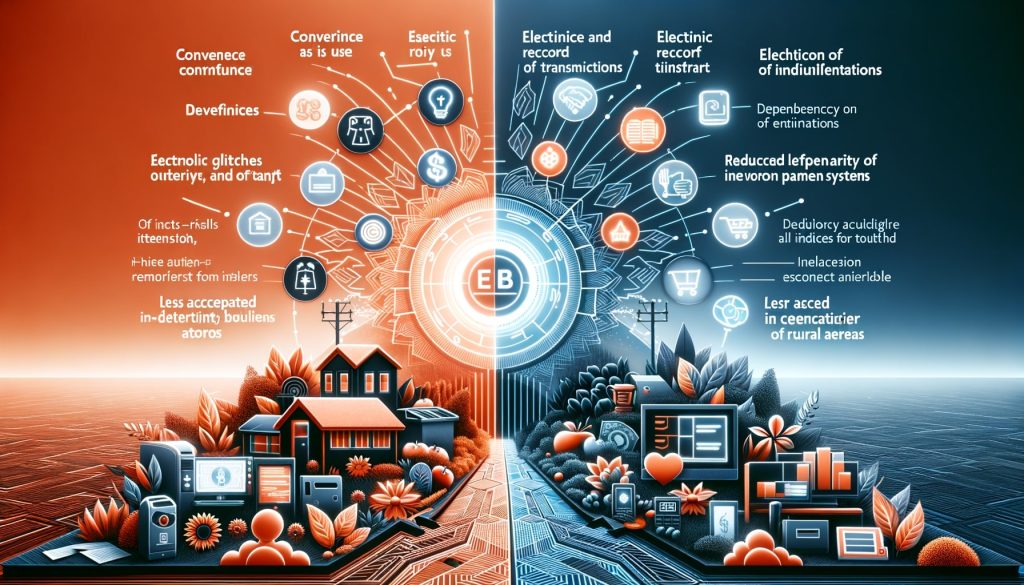
EBT payment systems offer several benefits to both recipients and the government. For recipients, EBT provides a convenient and secure way to access their benefits. They no longer need to carry paper vouchers or worry about losing them. EBT cards also offer a level of privacy, as the transactions are discreet and do not draw attention to the fact that the individual is using government assistance.
From the government’s perspective, EBT payment systems help reduce administrative costs associated with paper-based systems. The electronic system allows for easier tracking and monitoring of benefits, reducing the risk of fraud and abuse. Additionally, EBT cards can be easily deactivated if lost or stolen, providing an added layer of security.
However, EBT payment systems also have limitations. One major limitation is the inability to use EBT benefits for certain items, such as alcohol, tobacco, and non-food items. This restriction is in place to ensure that the benefits are used for their intended purpose of providing essential food and nutrition assistance. Another limitation is the potential for technical issues or system outages, which can temporarily disrupt access to benefits.
Eligibility Criteria for EBT Programs
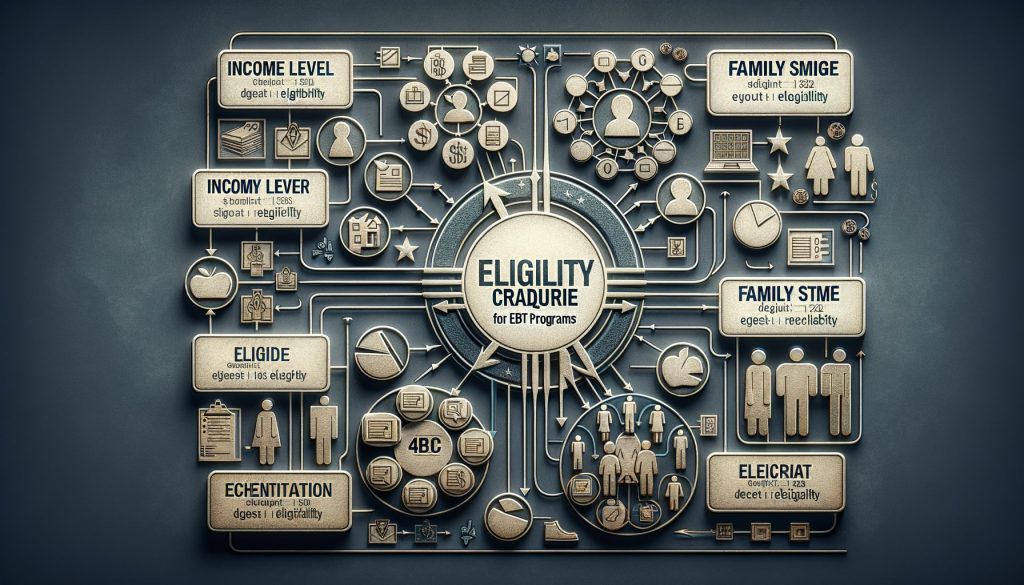
Eligibility criteria for EBT programs vary depending on the specific program and the state in which the individual resides. However, there are some common factors that are considered when determining eligibility. These factors typically include income, household size, assets, and citizenship or immigration status.
Income limits are set based on the Federal Poverty Level (FPL), which takes into account the number of people in the household. The FPL is updated annually and varies depending on the state. Generally, individuals and families with incomes below a certain percentage of the FPL are eligible for EBT benefits.
Household size is another important factor in determining eligibility. Larger households may have higher income limits than smaller households. Assets, such as savings accounts and property, may also be considered when determining eligibility. However, the specific asset limits vary by state.
Citizenship or immigration status is also taken into account. In most cases, U.S. citizens and certain categories of immigrants are eligible for EBT benefits. However, undocumented immigrants and some categories of legal immigrants may be ineligible.
Different Types of EBT Programs Available
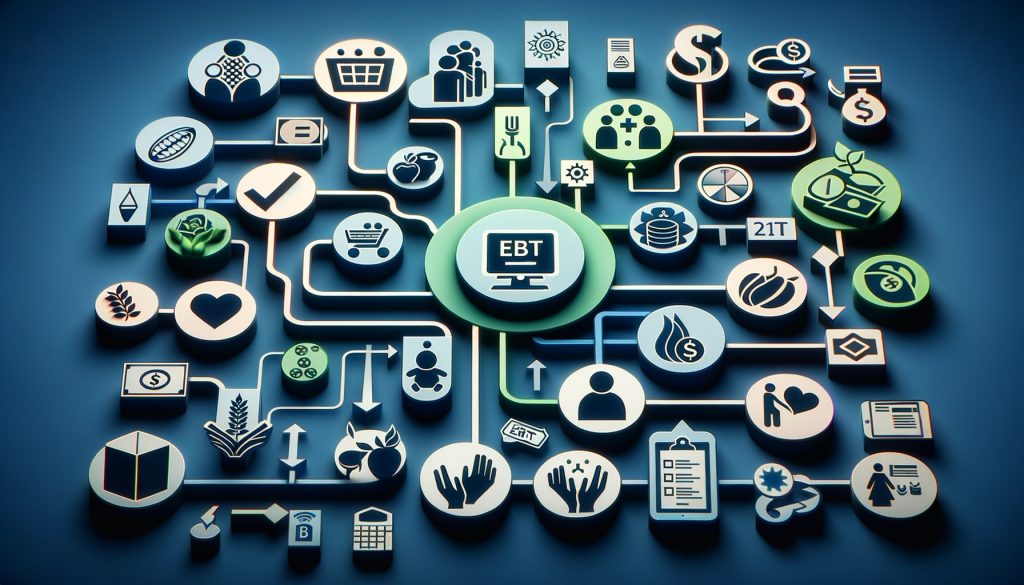
EBT programs encompass a range of social welfare programs, each with its own eligibility criteria and benefits. Some of the most common types of EBT programs include:
- Supplemental Nutrition Assistance Program (SNAP): Formerly known as the Food Stamp Program, SNAP provides eligible individuals and families with funds to purchase food. SNAP benefits can be used to buy a wide variety of food items, including fruits, vegetables, meat, dairy products, and bread.
- Temporary Assistance for Needy Families (TANF): TANF provides cash assistance to low-income families with dependent children. The funds can be used to meet basic needs such as rent, utilities, and other essential expenses.
- Women, Infants, and Children (WIC): WIC provides nutrition assistance to pregnant women, new mothers, and young children. The program offers vouchers that can be used to purchase specific nutritious foods, such as milk, eggs, fruits, and vegetables.
- Child Care Assistance: Some states offer EBT programs to help low-income families afford child care services. These programs provide subsidies that can be used to pay for child care expenses, allowing parents to work or attend school.
How to Apply for EBT Benefits: A Comprehensive Application Process
Applying for EBT benefits typically involves several steps. The first step is to gather the necessary documentation, such as proof of identity, income, and residency. This may include documents such as a driver’s license, Social Security card, pay stubs, and utility bills. It is important to ensure that all documents are current and accurate.
Once the documentation is ready, applicants can submit their application through various channels, such as online portals, mail, or in-person at local government offices. The application will be reviewed by the relevant agency, which will assess the applicant’s eligibility based on the provided information. In some cases, an interview may be required to verify the applicant’s circumstances.
After the application is approved, the applicant will receive their EBT card by mail. The card must be activated before it can be used to access benefits. Activation can typically be done by phone or online, following the instructions provided with the card.
EBT Card Usage: Where and What Can You Buy?
EBT cards can be used at authorized retailers, including grocery stores, supermarkets, and farmers’ markets. These retailers have been approved by the government to accept EBT payments. When making a purchase, recipients can use their EBT card to buy eligible food items, such as fruits, vegetables, meat, dairy products, bread, and cereals.
It is important to note that EBT benefits cannot be used to purchase non-food items, such as alcohol, tobacco, pet food, vitamins, and hot prepared foods. The restrictions on eligible items are in place to ensure that the benefits are used for their intended purpose of providing essential food and nutrition assistance.
EBT Payment System Security: Protecting Your Personal Information
As with any electronic payment system, security is a crucial aspect of EBT payment systems. To protect personal information and prevent unauthorized access, EBT cards are equipped with security features such as PINs and encryption technology. It is important for recipients to keep their PIN confidential and not share it with anyone.
In addition to individual security measures, EBT payment systems are also subject to rigorous security protocols at the institutional level. Government agencies and financial institutions work together to ensure the integrity and confidentiality of EBT transactions. Regular audits, monitoring systems, and fraud detection mechanisms are in place to safeguard the system and protect recipients’ benefits.
EBT Fraud Prevention and Security Measures
EBT payment systems have implemented various measures to prevent fraud and ensure the security of benefits. These measures include:
- PIN Protection: EBT cards require a Personal Identification Number (PIN) to complete transactions. This PIN acts as a security measure to prevent unauthorized use of the card. Recipients are advised to keep their PIN confidential and not share it with anyone.
- Card Replacement: If an EBT card is lost or stolen, recipients can contact their state’s EBT customer service hotline to report the issue. The card can be deactivated to prevent unauthorized use, and a replacement card can be issued.
- Transaction Monitoring: EBT payment systems have sophisticated monitoring systems in place to detect suspicious activity and potential fraud. Unusual spending patterns or multiple transactions within a short period of time may trigger an investigation to ensure the benefits are being used appropriately.
- Retailer Compliance: Authorized retailers that accept EBT payments are required to comply with strict guidelines and regulations. These guidelines include verifying the identity of the cardholder, ensuring eligible items are purchased, and maintaining accurate records of transactions.
Frequently Asked Questions
Q1. Can I use my EBT card to withdraw cash?
Yes, EBT cards can be used to withdraw cash from ATMs. However, there may be fees associated with cash withdrawals, and the amount that can be withdrawn may be limited.
Q2. Can I use my EBT card in other states?
Yes, EBT cards can be used in any state, as long as the retailer is authorized to accept EBT payments. However, it is important to note that some states may have different rules and restrictions regarding eligible items.
Q3. Can I sell or trade my EBT benefits?
No, it is illegal to sell or trade EBT benefits. Doing so is considered fraud and can result in penalties, including loss of benefits and legal consequences.
Q4. Can I check my EBT balance online?
Yes, most states offer online portals or mobile apps where recipients can check their EBT balance and transaction history. These platforms provide a convenient way to monitor benefits and ensure they are being used appropriately.
Conclusion
EBT payment systems have revolutionized the way government benefits are distributed and accessed. These systems provide a convenient and secure way for eligible individuals and families to receive and use benefits such as food stamps, cash assistance, and other social welfare programs.
By understanding the basics of EBT, how it works, its benefits and limitations, eligibility criteria, different types of programs available, EBT card usage, fraud prevention measures, and frequently asked questions, individuals can make the most of this valuable resource. EBT payment systems play a crucial role in ensuring that those in need have access to essential resources, promoting food security and financial stability for vulnerable populations.